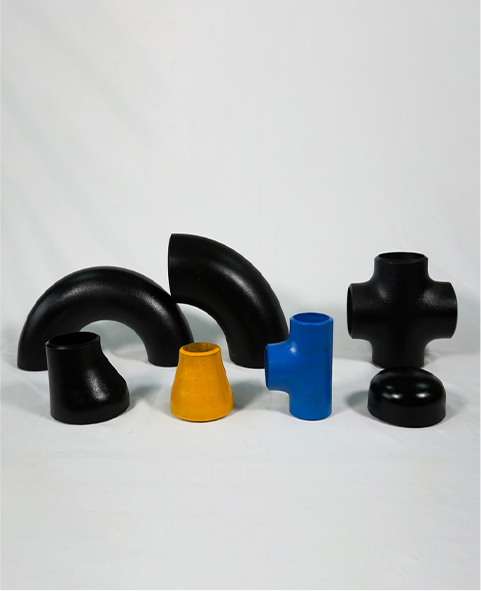-
Cangzhou Yulong Steel Co., Ltd.
-
Phone:
+86 13303177267 -
Email:
admin@ylsteelfittings.com
- English
- Arabic
- Italian
- Spanish
- Portuguese
- German
- kazakh
- Persian
- Greek
- French
- Russian
- Polish
- Thai
- Indonesian
- Vietnamese
- Zulu
- Korean
- Uzbek
- Hindi
- Serbian
- Malay
- Ukrainian
- Gujarati
- Haitian Creole
- hausa
- hawaiian
- Hebrew
- Miao
- Hungarian
- Icelandic
- igbo
- irish
- Japanese
- Javanese
- Kannada
- Khmer
- Rwandese
- Afrikaans
- Albanian
- Amharic
- Armenian
- Azerbaijani
- Basque
- Belarusian
- Bengali
- Bosnian
- Bulgarian
- Catalan
- Cebuano
- China
- China (Taiwan)
- Corsican
- Croatian
- Czech
- Danish
- Esperanto
- Estonian
- Finnish
- Frisian
- Galician
- Georgian
- Kurdish
- Kyrgyz
- Lao
- Latin
- Latvian
- Lithuanian
- Luxembourgish
- Macedonian
- Malgashi
- Malayalam
- Maltese
- Maori
- Marathi
- Mongolian
- Myanmar
- Nepali
- Norwegian
- Norwegian
- Occitan
- Pashto
- Dutch
- Punjabi
- Romanian
- Samoan
- Scottish Gaelic
- Sesotho
- Shona
- Sindhi
- Sinhala
- Slovak
- Slovenian
- Somali
- Sundanese
- Swahili
- Swedish
- Tagalog
- Tajik
- Tamil
- Tatar
- Telugu
- Turkish
- Turkmen
- Urdu
- Uighur
- Welsh
- Bantu
- Yiddish
- Yoruba

Nov . 09, 2024 10:38 Back to list
Understanding the Functionality and Benefits of Concentric Reducers in Piping Systems
Understanding Concentric Reducers A Key Component in Piping Systems
In the realm of industrial piping systems, the efficient flow of fluids is paramount. One crucial component that aids in achieving this is the concentric reducer. This device, although often overlooked, plays an essential role in managing changes in pipe diameter and ensuring seamless transitions in a variety of applications, from water supply networks to chemical processing plants.
What is a Concentric Reducer?
A concentric reducer is a plumbing fitting that enables a smooth transition between two pipes of different diameters, ensuring that the flow remains steady and uninterrupted. Its design features a symmetrical, conical shape that converges from a larger diameter to a smaller one, resembling an hourglass. Unlike eccentric reducers, which feature an offset design, concentric reducers maintain a central axis, meaning both the inlet and outlet are aligned. This central alignment is crucial especially in applications where maintaining a uniform flow is necessary, such as in gravity-fed systems.
Benefits of Using Concentric Reducers
1. Pressure Management One of the primary benefits of concentric reducers is their ability to manage pressure within the piping system. By gradually reducing the diameter of the pipe, they help to prevent sudden changes in pressure that could lead to turbulence or flow disruption. This is particularly important in high-pressure applications where maintaining consistent flow characteristics is critical to preventing damage to the infrastructure.
2. Versatility Concentric reducers are highly versatile and can be made from various materials, including stainless steel, PVC, and carbon steel. This adaptability allows them to be utilized in different scenarios, whether for corrosive chemicals, high-temperature fluids, or standard water supply systems.
3. Ease of Installation Due to their symmetrical shape, concentric reducers are generally easy to install. They can be welded, threaded, or flanged onto existing piping systems without the need for additional adjustments or complications, saving time and labor costs during installation.
concentric reducer

4. Reduced Cavitation Risk Fluid cavitation, which occurs when vapor bubbles form in a liquid due to pressure drops, can severely affect system performance and longevity. The controlled reduction in diameter provided by concentric reducers minimizes the risk of cavitation, promoting a healthier piping system.
5. Improved Flow Efficiency By providing a gradual transition from a larger to a smaller pipe, concentric reducers improve the overall flow efficiency. This design helps to minimize the turbulence that can occur with abrupt changes in pipe size, which can lead to increased friction losses and reduced system performance.
Applications of Concentric Reducers
Concentric reducers find use in a plethora of applications. In HVAC systems, they help manage airflow in ductwork, ensuring that air is delivered efficiently across varying distances. In the oil and gas industry, they are instrumental in pipeline construction, allowing for the transportation of different fuel types through pipelines of varying sizes.
Additionally, concentric reducers are widely used in water treatment plants, chemical manufacturing, and even in residential plumbing systems to connect different pipe sizes without altering the system's efficiency.
Conclusion
In summary, concentric reducers are indispensable components in modern piping systems. Their ability to facilitate a gradual transition between different pipe sizes while minimizing pressure fluctuations makes them vital for maintaining efficient and safe fluid transport. As industries continue to advance, the importance of such components will only grow, necessitating ongoing innovation and application of the concentric reducer in various engineering sectors. Understanding their functionality, benefits, and applications is vital for anyone involved in the design and maintenance of piping systems, ensuring that they are equipped to promote the effective and efficient movement of fluids, no matter the challenge.
Latest news
-
ANSI 150P SS304 SO FLANGE
NewsFeb.14,2025
-
ASTM A333GR6 STEEL PIPE
NewsJan.20,2025
-
ANSI B16.5 WELDING NECK FLANGE
NewsJan.15,2026
-
ANSI B16.5 SLIP-ON FLANGE
NewsApr.19,2024
-
SABS 1123 FLANGE
NewsJan.15,2025
-
DIN86044 PLATE FLANGE
NewsApr.19,2024
-
DIN2527 BLIND FLANGE
NewsApr.12,2024
-
JIS B2311 Butt-Welding Fittings LR/SR 45°/90° /180°Seamless/Weld
NewsApr.23,2024











